Among the frescoes in the Stanza dell’Incendio di Borgo, one of four that Raphael frescoed with his collaborators in the Vatican’s Apostolic Palace as soon as he arrived in Rome, is one that depicts the coronation of Charlemagne: the iconographic program of the decoration evidently had intended to establish a parallel between the then-reigning pontiff, Leo X, who signed a concordat with the French king Francis I, and his distant predecessor Leo III, who had placed the emperor’s crown on the head of the king of the Franks at Christmas 800. In the fresco, executed extensively by Raphael’s aides, the basilica is covered by rich, precious, colorful silk vestments that descend from the vaults and frame, as if they were the curtains of a curtain, the solemn ceremony. Here it is: in all likelihood, Gianluigi Colin had something like this in mind when, thinking about his exhibition Quel che resta del presente, he imagined draping the interior of the church of Sant’Agostino in Piacenza with its colorful textiles, partly hanging from the vault of the nave, and partly arranged where Baroque frames once housed the altarpieces that adorned one of the city’s most impressive churches.
Inside St. Augustine’s, however, there is nothing left. The five naves once overflowing with stucco, paintings and sculptures now preserve only traces of what was once stored here. It was the vicissitudes of history that made St. Augustine’s a sumptuous shell to be filled: first, in 1734, the transmutation of the building into a military hospital. Then, in 1798, the suppression of the order of Lateran Canons and the subsequent auctioning off of the movable patrimony: works of art, books, liturgical furnishings. Probably only what was not saleable remained, including the statues of the aisles, damaged during the Napoleonic occupation: they were beheaded by French soldiers out of contempt. A new transformation in 1801, this time into a military warehouse, and later, in 1863, the transfer to the State Property: the church was thus changed into barracks. Recently the new, latest vocation: an exhibition venue, a center where exhibitions are organized, where events of various kinds are held. And it is on this complex history that Gianluigi Colin decided to act.
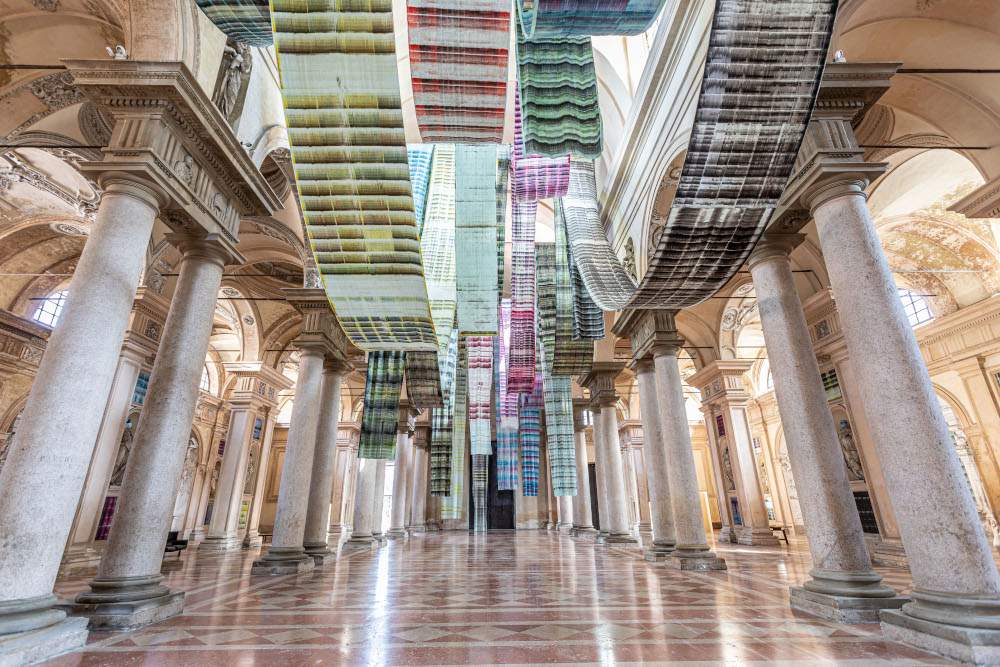
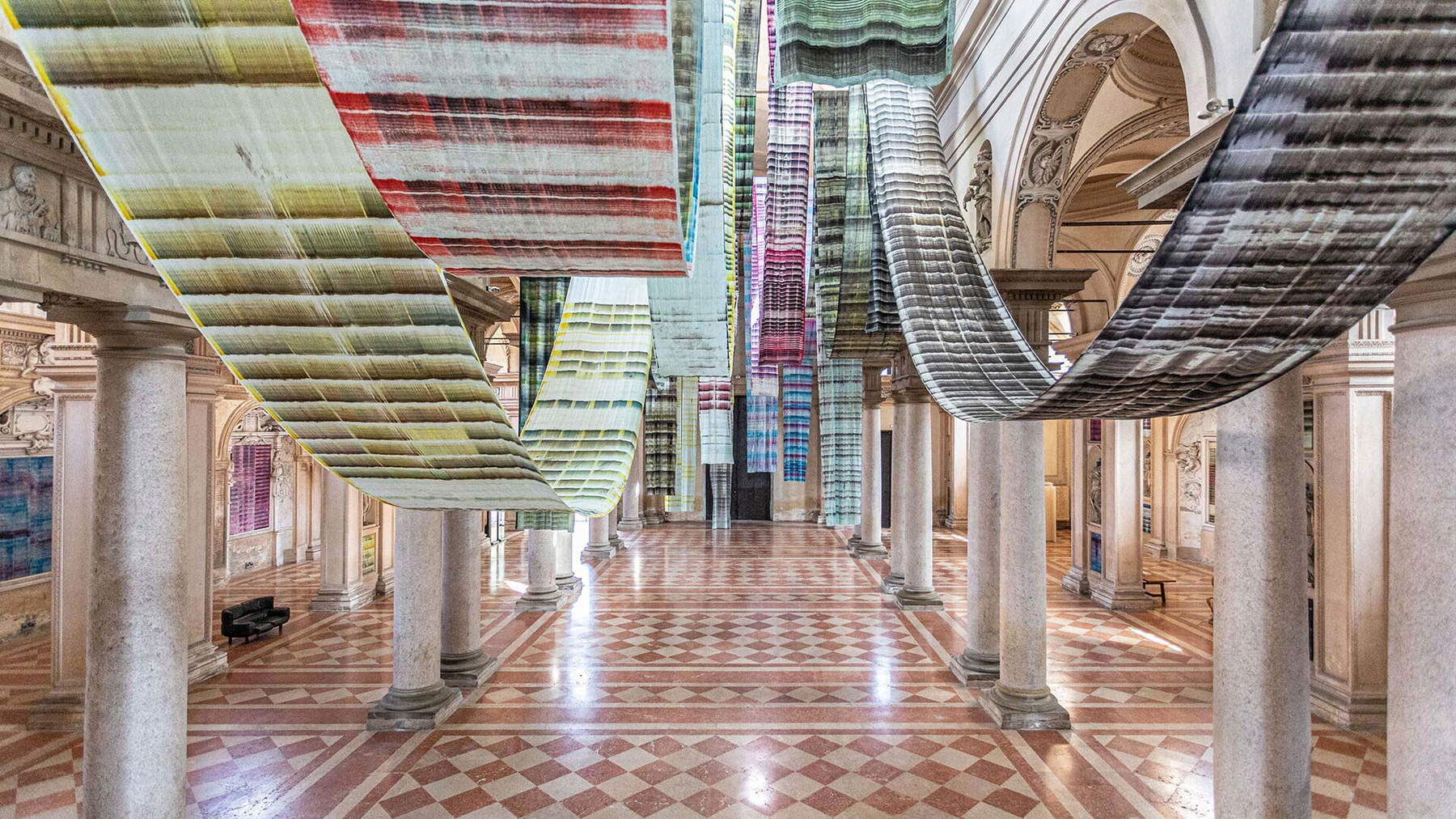 Gianluigi Colin, What remains of
Gianluigi Colin, What remains of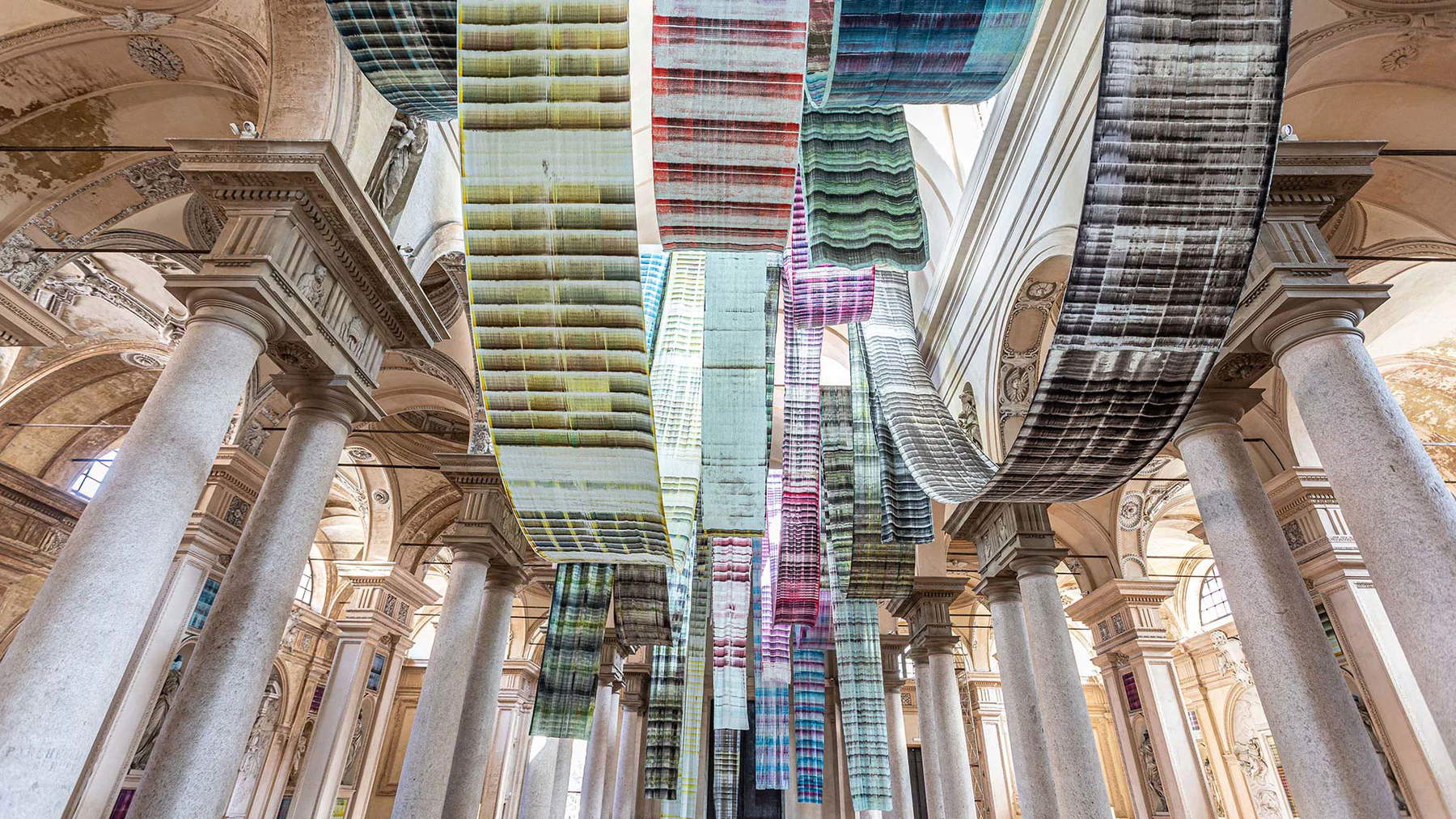
It was Jean Clair, some time ago, who wrote that we have moved from the culture of worship, made up of churches, altarpieces, liturgies, magnificence of offices, to the worship of culture, made up of museums, installations, exhibitions, art fairs. It has also become an established practice, on the part of certain intellectual milieus, to recall childish Sunday trips to the museum organized by parents with a passion for “beauty,” who preferred to avoid taking their parishioners to Mass, and instead subjected them to endless walks among works of art, perhaps the same ones that in ancient times were inside churches. It is a cult that today has legions of proselytes and is based on a constant and repetitive ceremonial like that of religion: there is then no better place than a church converted into a museum (because in fact, for most, “museum” and “exhibition venue” often become interchangeable expressions) to make manifest the transmigration of our daily liturgies. Colin draws on the wall hangings that used to be set up in churches on the occasion of particular solemnities and, with his colorful fabrics, he too solemnly celebrates, and with the utmost respect due to the place that hosts him, the rituality of these new social practices, and in a certain sense also their ecumenism, since the large cloths that Colin hangs from the ceiling of the church are totally aniconic, and seem to speak the same language to everyone.
Then there is another dimension discernible in Colin’s intervention, which is perhaps even better appreciated when admiring his colorful canvases arranged within the frames where altarpieces once stood: that of contemporary art as a functional means of bringing out a meaning that was taken for granted, or that was not heeded, with the effect that one runs the real risk of losing its meaning. Today, even when we enter a church, we tend to evaluate the works we find there for the pleasure they arouse when we observe them, but their scope is broader, and the agglomeration of signs, manifestations, references, rituals, and passions to which the works of art open up extends decidedly beyond what we perceive at first glance. Here then, as Aldo Colonetti writes, entering St. Augustine’s church with Colin’s wall hangings “means in the first place to contextualize art anew within a pre-existing rituality that we cannot pretend does not exist, on pain of completely misunderstanding the research and language, thus reducing art to a decorative function.” Colin’s art thus stands as a kind of defense against flattening, an antidote to homogenization, a timely response “against a globalization,” Colonetti stresses, “capable of trivializing every language,” since “it has brought us back inside a space that forces us to think again of the work as the ritual protagonist of a given history.” A form of resistance like that which one of the greatest Italian abstractionists, Roberto Floreani, has recently attributed to the language of abstract art, when he says that the artist’s consciousness also questions the “critical meaning itself of research,” reflecting “on the extended concepts of contemporaneity, actuality and inactuality, spectacularization or internalization, price and value, distinction of the work from the commodity and how, objectively, these aspects compiantly concern his world.”
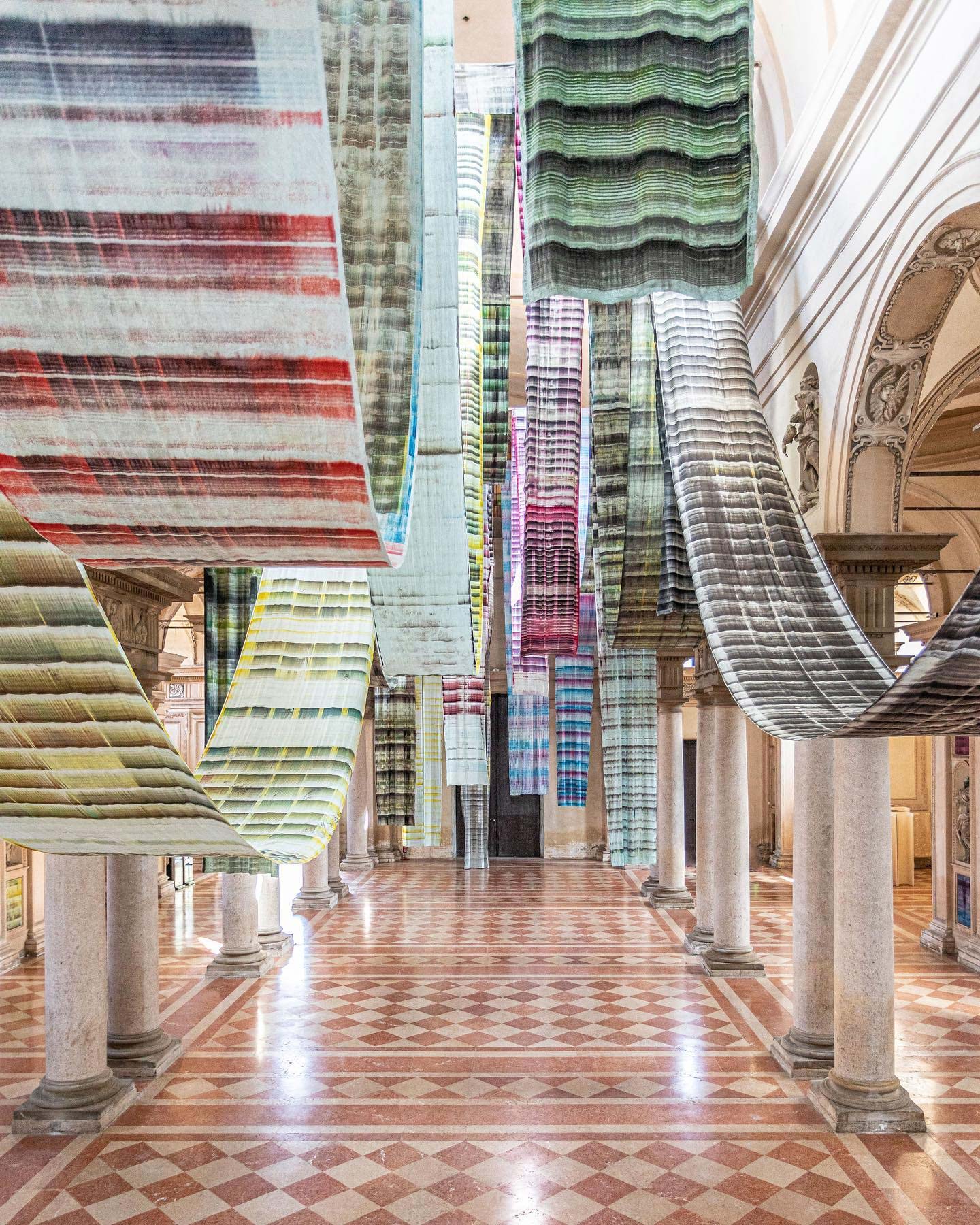
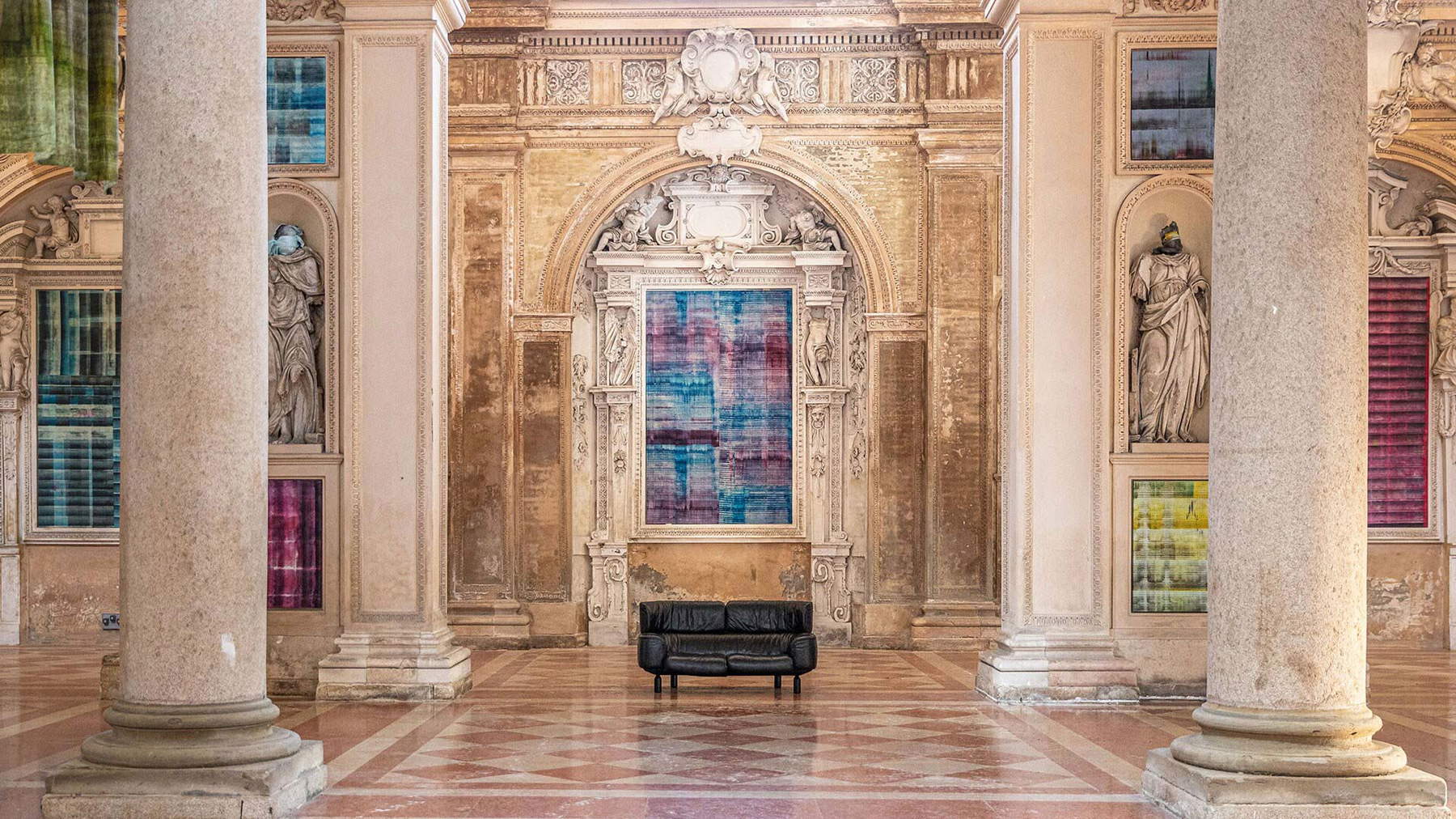
But there is also a further level of reading. One has a hard time imagining where Colin’s large sheets come from: they are, essentially, reused material. They are discarded fabrics, originally used for cleaning the rotary presses with which the thousands of copies of Corriere della Sera that are shipped from Milan to Italy and around the world every day are printed (Colin is theart director of the daily newspaper in Via Solferino, as well as co-founder of La Lettura). Colin’s artistic practice has often fed on the fruits, and sometimes even the scraps, of his work at the newspaper: perhaps it is also this double soul of his, this continuous experience of everyday reality, that makes him “a lucid artist who knows very well that he is one,” as one of the greatest contemporary Spanish writers, Arturo Pérez-Reverte, defined him laconically but effectively. The inks of typography impregnate his life and his art to compose a language made of signs and forms that resemble those of writing: and “like ancient hieroglyphics,” notes Luigi De Ambrogi, “we can try to decode them, but after a first, apparently easy beginning, it becomes impossible to continue.” And this is because they also have an epiphanic component that is difficult to convey, but which perhaps many can try to experience by feeling amazement in learning where these large canvases come from, which are nothing more than colossal ready-made with which Gianluigi Colin’s practice, largely based on the found object (though often the result of an upstream intervention by the artist during his work as an art director, Bruno Corà has rightly noted), probably touches the highest summit.
For Colin, his “rags of words,” his “Shrouds” as he is used to call them, have been a revelation, as he himself has recounted on several occasions. "In these objet trouvé,“ he reiterated in the text he signed for the Piacenza exhibition, ”I found the symbolic removal of infinite stories, a metaphor for the forgetfulness that envelops our present. It is the imprint of a dissolved time, the trace and testimony of so many concealed existences. Canvases taken from the heart of the world of communication on which I intervened by assembling discontinuous fragments of an arbitrary reconstruction: removed imprints of many lives, dissolutions of infinite stories." These sheets, very long sheets composed of nonwoven fabric, that is, that industrial product that resembles fabric but in which the fibers do not take on the typical structure of textile products, the crossing of warp and weft, are run through the presses at the end of the printing process, to clean the heads of the machines that leave ink on the newspapers: thus are born these works that preserve, in a sense, the memory of everything that happens in the world, taking on the appearance of a continuous abstract, multiform and multicolored landscape, from which also emerges the extraordinary variety in which we are given to live.
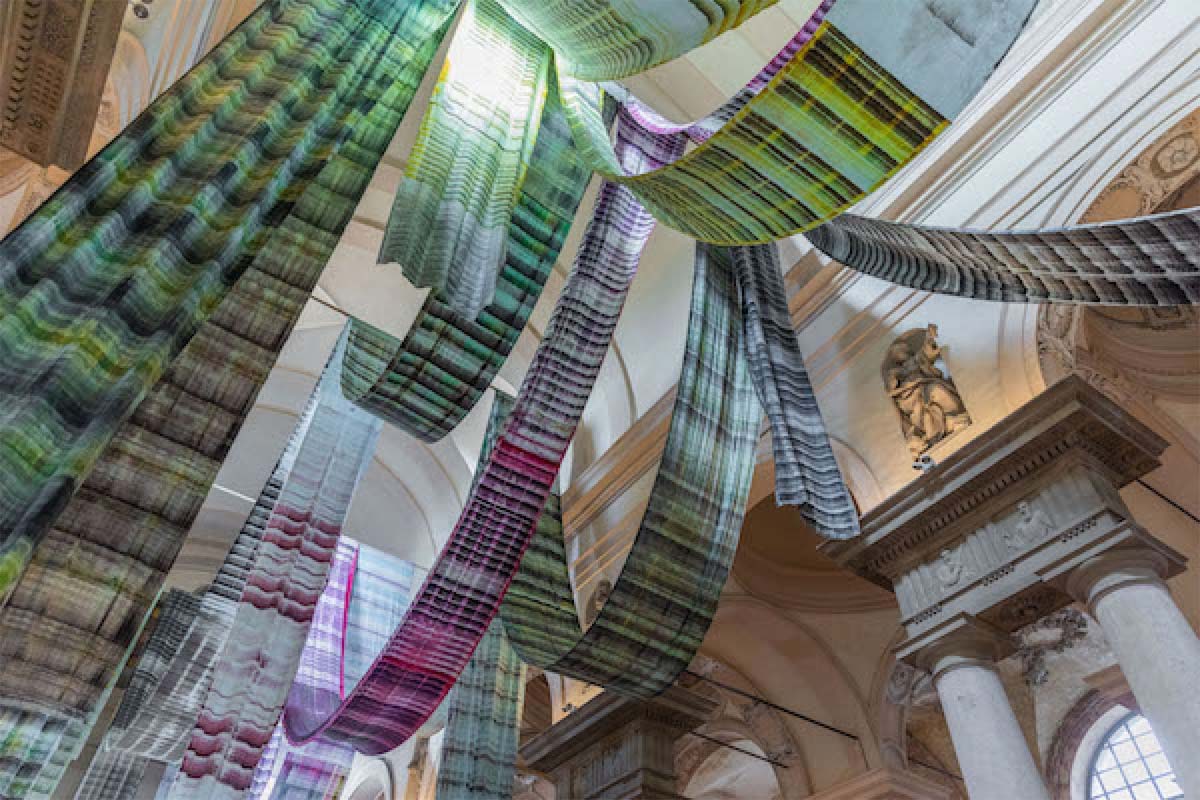
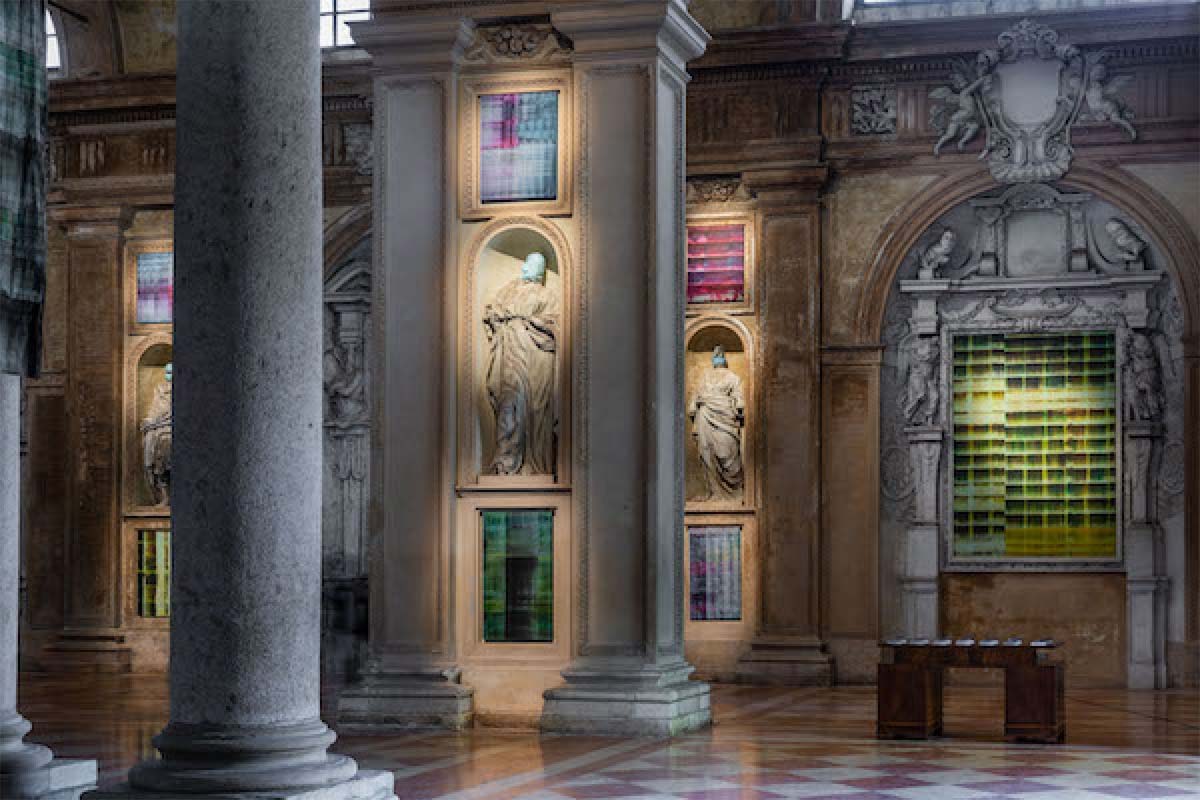
In the dailies, events that will remain etched in the history books are captured in their everyday unraveling and mingle with a more mundane and ordinary reality in an uninterrupted flow that, it could be said, has always been Colin’s main aesthetic priority: we had seen it with the installation The Wall, an entire wall with hundreds of remnants and fragments of newspapers, or again with the imposing Apparent Chaos, an overpowering work composed of three thousand photographic prints organized to cover every square inch of the walls that housed it, and above all to convey that continuous sense of horror vacui generated by the ravenous and voracious omnipresence of contemporary media, which feed on the main commodity that guarantees their survival, namely the public’s attention: to obtain it they must battle against dozens, sometimes hundreds, of competitors, and must thus flood with information the platforms through which recipients receive content from those who produce it. But back in the 1970s, economist Herbert Simon issued an inescapable warning: overabundance of information necessarily creates poverty of attention. And so, on the one hand Colin’s endless colorful landscapes create discomfort, put a little awe in those who observe them: when we learn the process from which they arise, one might feel an initial sense of skepticism, of mental rejection, which, however, then leaves the field to a strong feeling of bewilderment. The same, if one were to venture a certainly risky comparison, that travelers in early 19th century northern Europe felt when faced with the sharp peaks of the Alps, when faced with their gorges, their waterfalls, their impassable and difficult roads. A sense of awe and even helplessness: one can do little in the face of the flow that Colin captures with his sheets, one is only overwhelmed by its monstrous majesty. But then astonishment takes over, admiration before a spectacle that to the grand tourists of three centuries ago provoked a pleasure that is difficult to describe, and to the beholder instead Colin’s Shrouds provokes a different form of awareness.
And this is because, contrary to what one might think, Colin’s intent is not to deny what goes on in everyday life, nor does the artist want to present to the concerning an “other” reality, so to speak, that is, one that represents a rejection of the one we experience every day. Far from it: otherwise, it would not even explain why Colin took pains to restore a head to the saints beheaded by Napoleon’s soldiery, in a strong aesthetic act against all contemporary iconoclasm. For Colonetti, Colin’s shrouds first and foremost question the viewer, asking what remains of the world after having “read it, interpreted it, turned it on all sides with all the means that ’art in the age of its technical reproducibility’ offers us.” These canvases thus become a form of reflection on our age, a means of trying to establish a connection between our time and that of the media. But at the same time they are works that indicate, Colonetti further writes, the existence of “a creative and design possibility capable of going beyond reality, without denying it.” It is not easy to read through the informational chaos of our age, much less easy to identify global keys to find order in all this instability. However, one can find forms of dialogue, forms of overcoming, forms of preserving memory. This is perhaps the idea that lurks among Gianluigi Colin’s abstract landscapes, this is perhaps the innermost soul of an intervention that, although a product of a society in which information has become a consumer good, conveys to us a history and the deepest sense of a place that history has subjected to a long and complicated series of transformations over the centuries.
Warning: the translation into English of the original Italian article was created using automatic tools. We undertake to review all articles, but we do not guarantee the total absence of inaccuracies in the translation due to the program. You can find the original by clicking on the ITA button. If you find any mistake,please contact us.